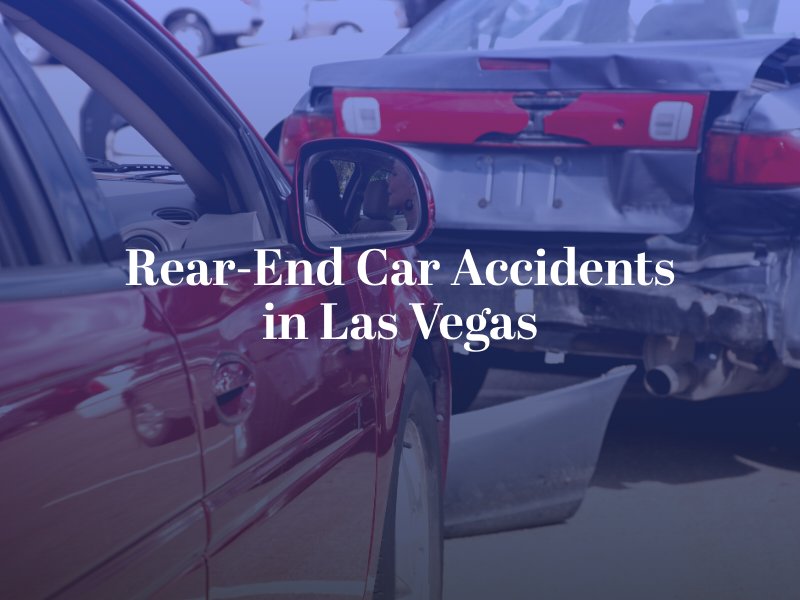Rear-end accidents occur when the front of one vehicle strikes the back of another. These crashes can happen at high speeds on highways or at low speeds in stop-and-go traffic. Regardless of the circumstances, the consequences can be severe, leaving victims with injuries, mounting medical bills, and a long road to recovery. Consulting with a Las Vegas car accident attorney after a rear-end crash is advised.

Rear-end collisions often result from driver negligence. When drivers fail to maintain a safe distance or pay attention to the road, they increase the risk of causing a crash. Some of the most common factors contributing to rear-end accidents include:
The sudden, violent motion of a rear-end collision can cause a range of injuries, even at low speeds. Whiplash is one of the most common; this injury occurs when the head and neck are rapidly thrown forward and then snap back. This motion can damage soft tissues, leading to pain, stiffness, and reduced range of motion.
Other potential injuries include back and spinal cord damage, head trauma, and facial lacerations from broken glass or impact with the steering wheel or dashboard. Rear-end accidents can also cause emotional trauma, such as post-traumatic stress disorder (PTSD) or driving anxiety.
In most rear-end collisions, the rear driver is considered at fault due to their responsibility to maintain a safe following distance and remain alert. However, there are exceptions to this rule.
If the lead driver suddenly reverses or stops without cause, they may be found partially or fully liable for the accident. For example, if a lead driver suddenly slams on their brakes to make a turn they nearly missed, they may be held responsible for any resulting collision.
Manufacturers of defective auto parts, such as faulty lights or brakes, may also be liable if their products lead to an accident. In multi-vehicle pile-ups, fault may be distributed among several drivers based on their actions and contributions to the crash. An accident reconstruction specialist can help determine each party’s level of responsibility.
To support your case, it is important to gather evidence that can demonstrate the other parties’ liability. Photographs of vehicle damage, witness statements, police reports, and medical records can be particularly powerful.
Rear-end collisions can be more complex than they initially appear. The Las Vegas personal injury lawyers at the Janda Law Firm have the knowledge and experience to navigate these challenges and protect your interests.
Whether you’re dealing with insurance companies or seeking compensation for injuries, your Vegas car accident attorney will work tirelessly on your behalf. Contact us at (702) 758-8888 now to schedule a consultation and take the first step toward resolving your case.